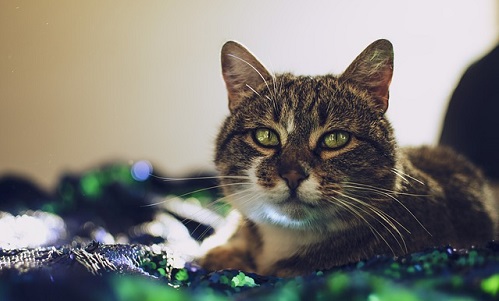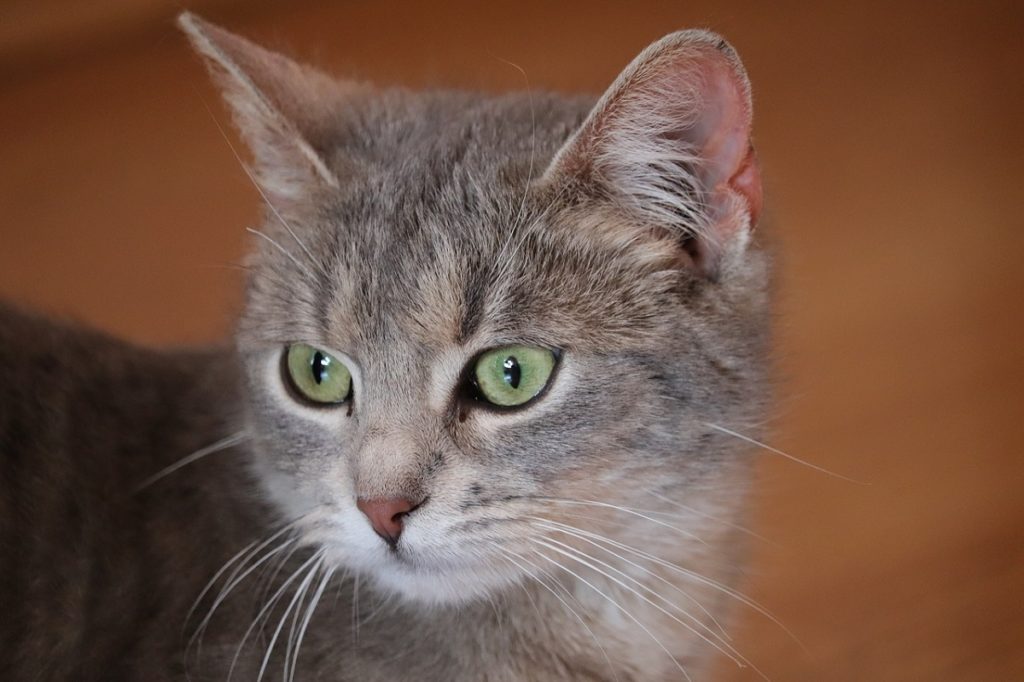One of the largest internal organs in a cat’s body is his liver. The liver is made up of many parts, each section carrying out an essential function for the body. One of these functions helps with the digestion of food that helps to supply the body with energy by releasing glycogen. A feline’s liver is also responsible for synthesizing proteins, storing vitamins, creating bile, and reducing any poisonous properties that may be present in the body.
As you can assume, the liver is an incredibly important organ within a feline’s body. A cat cannot function without the support from his liver. Unfortunately, diseases can affect the liver, causing a plethora of issues for your furry friend.
Understanding how the liver plays a role in the body is the first step to understanding how liver disease can occur, and specifically Hepatic Lipidosis. This article will provide a brief overview of Hepatic Lipidosis in cats, common signs, and potential treatment options for cats diagnosed with this issue.
What is Hepatic Lipidosis?
Hepatic Lipidosis, also referred to as Fatty Liver Disease, occurs when a feline’s liver is no longer able to carry out the essential functions needed to maintain homeostasis in the body. If left untreated, this serious condition can lead to illness or even death.
This particular type of liver disease usually presents itself when a cat loses his appetite and stops eating. Most often, it happens after a pet parent chooses to make a change to the cat’s diet. Oftentimes, pet parents believe that a cat will “come around” to the new food, but this is rarely the case. If your cat continues to refuse to eat, take him to the vet as soon as possible.
When the cat stops eating, his body goes into starvation mode and will begin to pull energy from his body’s fat storage. These fat stores are then sent to the liver and are broken down for nutrition and energy. Since a cat’s body normally relies on protein for energy, his body will fire off warning signals when the fat storage is used instead. His liver can become overwhelmed by this new energy source, which causes his fat cells to store up in the liver, hindering its regular functioning.
Try to think of this process and how it would affect a human body. If someone were to stop eating, the body would go into starvation mode as well. The body will have to rely on fat stores for energy until the individual eats again to help regulate the metabolism. The difference is that a human body can process the fat stores, but the liver of a cat cannot. The fat cells accumulate in his body and continue to mess with the overall processes of the liver.
 It is this process that causes Hepatic Lipidosis, which is the most common type of liver disease found in cats. This particular disease can happen suddenly, or it can be a slow and progressive disease that’s brought on over time.
It is this process that causes Hepatic Lipidosis, which is the most common type of liver disease found in cats. This particular disease can happen suddenly, or it can be a slow and progressive disease that’s brought on over time.
Don’t know how much a cat should eat on a daily basis? Professionals recommend that cats should eat several small meals throughout the day. In a natural habitat, they have to eat smaller portions to be able to move often and hunt smaller animals. It is abnormal for them to eat large meals of kibble that are available at all hours of the day–it goes against a feline’s design. Cats are naturally active and lean creatures, there bodies aren’t meant to store excess fat. This is why Hepatic Lipidosis can be so dangerous for feline companions.
Symptoms of Fatty Liver Disease in Cats
There are a many symptoms of liver disease in cats. As the owner, being alert to these issues will be imperative to your cat’s health. Often, it is these types of changes that can create or lead to fatty liver disease in cats:
- A change in diet
- Nutritional deficiencies
- A stressful environment
- Diabetes
- Obesity
- Hyperthyroidism
If your cat has experienced any of the above issues, make an appointment with your veterinarian as soon as possible. These symptoms often go hand-in-hand with the following criteria:
- Significant weight loss
- Poor appetite
- Middle age
- Overweight
- Collapsing or fainting
- Vomiting
- Constipation or diarrhea
- Dehydration
- Head muscle deterioration
Specifically, if a feline has been affected by fatty liver syndrome they will be exuding symptoms such as anorexia, weight loss, dehydration, an excessive amount of droll, and vomiting. The longer the disease progresses, the worse these symptoms will become.
If the cat does not receive the proper care and the illness progresses, they will begin to experience the following symptoms:
- Lethargy
- Jaundice
- Dramatic weight loss
- Seizures
- Coma
Fatty liver disease is extremely serious and should not be ignored. If you assume your cat is suffering from Hepatic Lipidosis, get him to the vet as soon as you can.
If Hepatic Lipidosis is a secondary disease, it may be masked by other symptoms. These include:
- Social interaction issues
- Pancreatitis
- Inflammatory bowel disease
- Another liver disease
- Cancer
Can Fatty Liver Disease be Prevented?
The good news is that there are measures that can be taken to try and avoid Hepatic Lipidosis. As the most common cause of this liver disease is lack of food, the owner is responsible for feeding their feline on a daily basis. It’s also important that the cat is being fed nutritious, high-quality food. It will be very important that a cat is getting the appropriate amount of calories each day, so just be sure to do some research first or ask your vet for a cat nutrition checklist. Finding the root cause of a cat’s lack of eating should be a priority before the disease has a chance to develop any further.
Another way this health problem can be prevented is by making sure your cat is in a safe and comfortable environment. Everyday stressors such as other pets, nagging children, or even loud noises can cause stress in your cat.
A cat’s lack of eating could possibly be due to a pain in his mouth. If there is a sore on his tongue or the roof of his mouth this will likely cause discomfort. Next time you are at the veterinarian’s office, have them show you how to check inside a kitty’s mouth for sores.
If you have a cat who suffers from obesity, it will be obvious that they have developed Hepatic Lipidosis if they dramatically start losing weight. Remember, a cat should not be overweight to begin with, so healthful steps should be taken to keep that from occurring. If he is already overweight, the pet parent should speak with his veterinarian for a weight loss diet plan. One easy way to stop obesity in cats is to not let your cat snack all day and switch over to set feeding times instead.
Diagnosing Fatty Liver Disease
The first part of battling this disease is arming yourself with the most accurate information.
During a visit to the vet, the owner should disclose all of the cat’s health history and current symptoms. Go ahead and tell them about the identifiable stresses within the environment, all of the symptoms that were witnessed, as well as a rough timeline of when each of the symptoms occurred.
 The veterinarian may suggest that laboratory tests be taken, like a urinalysis and blood count. Both tests will be helpful in determining if a cat has Hepatic Lipidosis. If warranted, the veterinarian may suggest an ultrasound to take a closer look at the cat’s liver and his surrounding organs. Your vet may conduct these tests to look for signs of fatty liver disease, which include, but are not limited to, an enlarged liver and abnormalities in the spleen and kidneys. The cat’s veterinarian may also suggest a biopsy or needle aspiration to confirm his diagnosis.
The veterinarian may suggest that laboratory tests be taken, like a urinalysis and blood count. Both tests will be helpful in determining if a cat has Hepatic Lipidosis. If warranted, the veterinarian may suggest an ultrasound to take a closer look at the cat’s liver and his surrounding organs. Your vet may conduct these tests to look for signs of fatty liver disease, which include, but are not limited to, an enlarged liver and abnormalities in the spleen and kidneys. The cat’s veterinarian may also suggest a biopsy or needle aspiration to confirm his diagnosis.
These tests can be very beneficial when trying to diagnose Hepatic Lipidosis. If the veterinarian confirms that he does, in fact, have this illness, there are several treatment options that can be recommended.
My Cat Has Hepatic Lipidosis: Now What?
Thankfully, when caught in the early stages, fatty liver disease can be treatable. If your cat is not eating and you are worried that Hepatic Lipidosis is starting to set in, try feeding him some kibble, salmon, or any other food he likes to prevent the illness from progressing further.
The most popular treatment method for Hepatic Lipidosis is through nutritional support. If the cat will not eat from his bowl or by hand, your vet may suggest feeding him a tube until he begins to eat on his own again. This would be a liquid diet that is overseen by the veterinarian. By intaking small amounts of nutrients from the tube, a cat’s liver is able to endure minimal stress while going through metabolic recovery.
Depending on the cat’s unique situation, a tube may be inserted into his stomach either by way of an incision in his side, nose, or esophagus. He must be fed through the tube until he is willing to start eating on his own again. The timeframe on this will vary, but this process normally lasts about four to six weeks. Once the feline is back to his normal self, the veterinarian will remove the tube and proceed with a special diet. Sometimes a veterinarian will recommend nutritional supplements for this recovery period as well.
Once the cat is feeling back to normal, the vet will run a second round of tests. If the cat has suffered from some of the more serious complications like seizures or jaundice, they may need to be in the hospital for further care. Oftentimes, he will need IV treatments due to severe dehydration and exhaustion. These fluids can also help flush his liver from the built-up fat storage.
While this can seem like a scary diagnosis, the best news is that it is both preventable and treatable. Catching Hepatic Lipidosis in its earliest stages gives your cat the best chance at a full recovery, so pay close attention to the way your cat is behaving and take him in if he’s showing any strange symptoms.
Sources:
- “Fatty Liver Disease in Cats: Not Eating Can Quickly Kill.” Pet Health Network, www.pethealthnetwork.com/cat-health/cat-diseases-conditions-a-z/fatty-liver-disease-cats-not-eating-can-quickly-kill.
- “Fatty Liver Disease in Cats.” PetMD, www.petmd.com/cat/conditions/digestive/c_ct_hepatic_lipidosis.
- “Known Triggers of Feline Hepatic Lipidosis.” Mercola Healthy Pets, www.healthypets.mercola.com/sites/healthypets/archive/2017/05/30/hepatic-lipidosis-cats.aspx.




